Windows Phone 8.1 Review
by Anand Lal Shimpi on April 14, 2014 10:00 PM EST- Posted in
- Smartphones
- Microsoft
- Mobile
- windows phone
- Windows Phone 8.1
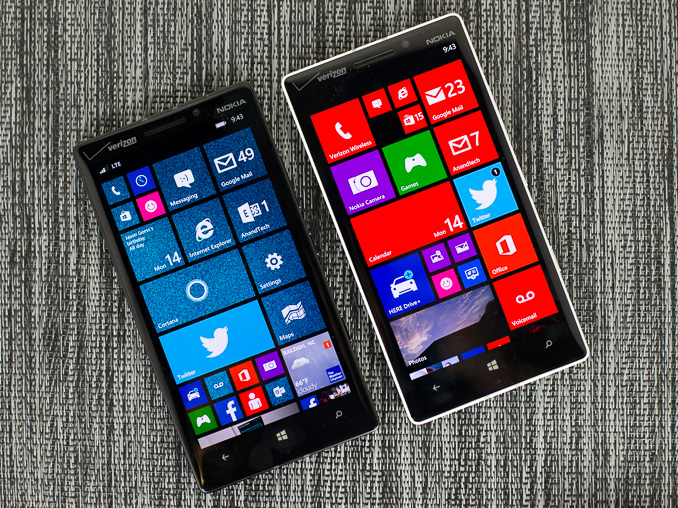
I was an early fan of Windows Phone 7. I remember completely switching over to the platform for about a month back in 2010, and being relatively happy. It wasn’t until I needed tethering support (which didn’t exist in the first release of WP7) that I had to move away. Unfortunately, Microsoft’s software and hardware update cadence for Windows Phone couldn’t pull me back.
In its first three years of existence, Windows Phone received roughly the same number of major updates as Android and iOS. From 2010 - 2013, Google took Android from Gingerbread to KitKat, Apple revved iOS from version 4 to 7, and Microsoft gave us Windows Phone 7, 7.5 and 8.0. At best, you can consider the software release cadence competitive. At worst, it’s not enough. Windows Phone started behind both Android and iOS. To come out ahead, Windows Phone updates had to be more substantive, more frequent or both.
The same could be said about hardware. Microsoft lagged behind Apple and Google to dual-core, 28/32nm silicon, higher resolution displays, and LTE support among other things. Although the situation has improved over the past year, if the goal is to take the #1 or #2 spot, the upgrade cadence needs to be more aggressive.
It always felt like the point of Windows Phone was to be a midpoint between the flexibility of Android and iOS’ guarantee of a certain level of user experience. The platform was born during a time when Android was not yet ready for the mainstream (Gingerbread) as an iOS alternative, and when it still looked like the Windows licensing model would work for handset OEMs.
Today the world is a different place. Android is far more mature than it was in 2010, and it’s polished enough where it can easily be a solution for the enthusiast as well as the first time smartphone user. While Microsoft’s strategy in 2010 might have been one of eyeing the crown, in 2014 the strategy is more humble and focused.
Improve the platform, address issues both little and big, and continue to grow. That’s the mantra these days and today we see it put in action with the arrival of Windows Phone 8.1, the fourth major release of the platform since its arrival in 2010.
I’ve spent the past few days using a Nokia Lumia Icon with the Windows Phone 8.1 developer preview (software available today). All devices capable of running Windows Phone 8 will be getting the 8.1 update for free over the next couple of months. Any new hardware vendors looking to ship Windows Phone 8.1 will be able to do so without paying Microsoft any licensing fees for the software itself.
Although the biggest change to Windows Phone 8.1 happens to be at the API level (including support for universal apps that can run on PCs, tablets and phones), there are a number of user facing feature enhancements that are worth talking about. Microsoft’s reviewer’s guide for Windows Phone 8.1 clocks in at 239 pages, so there’s no way I’ll be able to get to everything here, but I’ll go through several of the highlights.
Start Screen Updates
With the GDR3 update to Windows Phone 8, Microsoft added support for a third column of medium sized tiles on 1080p devices with a large display. With Windows Phone 8.1, that flexibility comes to all devices.
The third column is pretty nice, although admittedly the Lumia Icon I was testing WP8.1 on already had it thanks to the WP8.0 GDR3 update. You can use the third column to either have an insane amount of tiles on the display at once or keep everything nice and spread out. Windows Phone ends up covering the broadest spectrum of information density on its home screen as a result.
The other big change to the start screen is you can now set a photo as a background, instead of being limited to just white/black. With a photo as your background, your live tiles become transparent and allow your background to show through. Tiles that have a colored logo (e.g. Xbox Games, Facebook app) as well as any hub tiles (e.g. People) remain opaque. Despite going through three major revisions of the OS, Windows Phone hasn’t really changed much visually since its introduction in 2010. The ability to personalize the start screen goes a long way in making the UI more interesting.
The multitasking UI gets a slight update as well in WP8.1. You still tap and hold the back button to activate the UI, but you can now quit out of apps by swiping down on the app’s card.
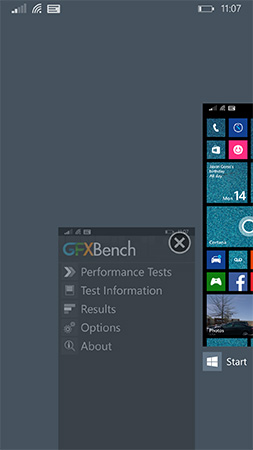
This is quite similar to what’s supported under iOS 7 (where it’s swipe up to quit). Unlike the iOS implementation however you can only swipe down one app at a time.
Revised System Specs
At the introduction of Windows Phone, Microsoft required that all OEMs have a physical camera button in addition to physical or capacitive buttons for back, home and search. It didn’t take long for Microsoft to remove the physical camera button requirement. With Windows Phone 8.1 the back/home/search buttons can be relocated on-screen, similar to what’s done on many Android handsets today. To accommodate those devices that inevitably ship without dedicated OS buttons, the screenshot button combination has changed from Power + Windows button to Power + Volume up.
The adjusted hardware requirements should make it easier for OEMs to take an existing Android hardware design and port it over to Windows Phone.
People Hub API, Disconnected Music+Videos Hub
When Windows Phone launched one of the major focal points was the People Hub, a single location for all of your contacts across all accounts/social networks. Previously you had to add accounts to Windows Phone in order for the People Hub to grab contacts from those accounts. With Windows Phone 8.1 Microsoft moves the People Hub from a push to a pull based service. If a 3rd party app supports it, all you need to do is login to the app itself and the People Hub will automatically pull in data from the app. Facebook is the best example of this as you no longer need to login to the Facebook app and then add your Facebook account separately to the People Hub. It’s a subtle change but one that echoes Microsoft’s new position on Windows Phone: rather than you conforming to Windows Phone, the OS should try and conform to you.
The other big hub change is the Music+Videos hub has been split up into two individual apps, each which can be updated independently of the OS.


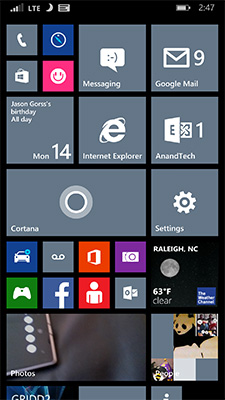
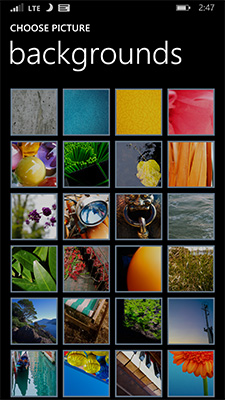

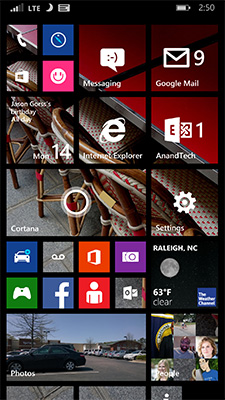
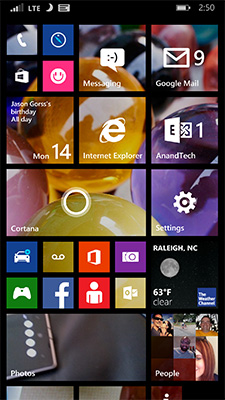
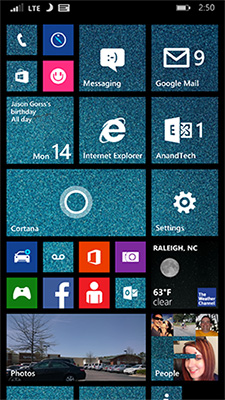
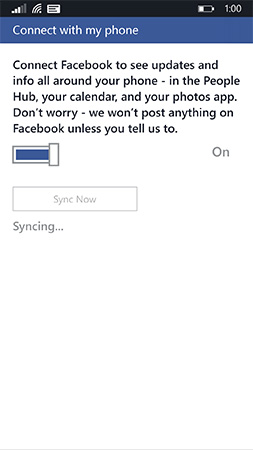








111 Comments
View All Comments
HardwareDufus - Wednesday, April 16, 2014 - link
Running Win Phone 8.1 now on my Nokia 920. Decent improvements. Overall I'm satisifed.Echo everyone's sentiments on the Music App... can't believe I preferred the Built-In Music App on my BlackBerry Torch 9800. Anyway, the music App is not a deal breaker for me, but I am surprised that it feels so unpolished. How do you close a song? Once I play a song. If I stop it... well it's still there... so, I work the Volume controls several hours later... and up pops the song in a Little slider window (not really a pop-up.. but you know what I mean). I've even done the hold the back button... hit the X or SLide down the window gesture.... Yup... 'In My Place' by ColdPlay is still waiting to resume play (hey.... I'm old... I still like Coldplay).
BMNify - Thursday, April 17, 2014 - link
the Xbox music app is now delinked from phone and will received direct updates from store, the next update should come out by next week which should take care of some of the complaints and after than they have promised biweekly updates, so should solve most of the user complaints within few weeks.nicktina - Friday, April 18, 2014 - link
I was going crazy trying to figure out how to get the paused music app off my volume keys. The 1st thing I figured out was if I opened Pandora I could stop the playback from Pandora and that would take care of it. But today I found an app that's free this weekend called "stop the music". I pinned it to my start screen. I opened Nokia mix radio, backed out to start screen, tapped the stop the music app and it was gone. Silly it takes a 3rd party app to remove music but whatever, it works.Arbie - Wednesday, April 16, 2014 - link
Thanks for the tips re Cortana and MagikMail. But these are approximately infinitely more complicated than I want to get into, even to obtain a whitelist surrogate. I don't use my phone on-line, for mail, data, or anything like that. It's primarily a small media player with phone capability when I need it. And it's great for that, at the price.I just... want... whitelist.....
Arbie - Wednesday, April 16, 2014 - link
Thanks for the info. I am looking forward to using that feature. BTW I did try cleaning my SIM card but that didn't help.ctodd - Wednesday, April 16, 2014 - link
I really want to like WP! Its very tempting, but after being abandoned on an 8 month old 7.1 device, I'm leery to take the plunge again. It is exciting to see them finally catch up on the features but I'm still a little put off with the overly flat look. I like the idea of tiles, but everything else is just too flat and boring. I was hoping they would optimize the look by adding a little more depth and color but I guess they just want to be different.BMNify - Thursday, April 17, 2014 - link
Dude, the latest WP 8.1 update has great depth and colour to tiles along with some paralax like effect, you should just check out some 8.1 phone for that, i am enjoying changing background of the tiles now after 8.1 update, just check out some examples and how to do it here: http://www.wpcentral.com/how-get-beautiful-start-b...gamoniac - Thursday, April 17, 2014 - link
My 1.5 years old, 2-core Lumia 920 (WP 8.1) scores 968 on html5test.com. So it looks like perhaps WP8.1 limits the max core an app can use to conserve resources or to guarantee responsiveness. Or perhaps IE 11 is not optimized for 4 cores, IDK. Regardless, I love the upgrade and my old phone is as snappy as it was the first day I got it. Kudos to Microsoft.gamoniac - Thursday, April 17, 2014 - link
@Anand, I have had bad experiences with Android updates in both the phone and tablet spaces. Besides Google's own Nexus line of phones, do major phone manufacturers give their consumers fair and prompt Android patches?Hrel - Friday, April 18, 2014 - link
"All devices capable of running Windows Phone 8 will be getting the 8.1 update for free over the next couple of months" - This is probably Android's biggest shortcoming. I can buy a brand new phone, with a 6 month old OS that will NEVER get an update. It's pretty infuriating. Now yes, I am techie enough root the phone, but that's not an elegant solution, to say the least.I don't know if it would require locking in a certain number of SOC configurations or what, but I really think Google needs to guarantee OS updates for at LEAST 2 years from the phones release.
IF things go on the way they are, I can see myself switching away from Android and over to Windows Phone. Probably be up OS9 by then, so hopefully this stupid "tile" bullshit is gone and we can have actual windows and icons again. Seriously $soft, the functionality of these "tiles" is infuriating.